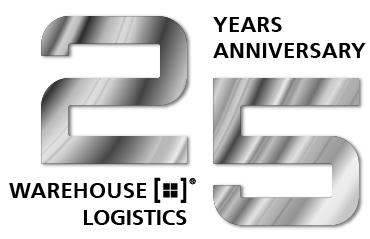Nieuws
SAP EWM & QM integration
18.02.2025
Integrate quality inspection seamlessly into your warehouse processes.
New tutorial video at Espresso Tutorials!
We have published a new video that takes an in-depth look at quality inspection in SAP EWM - specifically the seamless integration of SAP Extended Warehouse Management (EWM) and Quality Management (QM).
Curious? Dive deeper into the topic and watch the full video on the Espresso Tutorials platform: Link
This blog post provides you with a compact overview of the most important concepts, benefits and processes that will help you to implement an efficient quality inspection in SAP EWM.
Why is EWM/QM integration so important?
Quality inspection is a key factor for smooth warehouse and logistics processes. By integrating SAP EWM and SAP QM, companies benefit from improved tracking, higher product quality and optimized inventory management.
Depending on your deployment option, the integration of the inspection process takes place in different ways. Let's take a closer look at these.
Differences between the deployment options
SAP EWM can be integrated with the SAP ERP system in different ways. Depending on the origin of the inspection settings, different master data is used to create the EWM inspection document or the QM inspection lot.
In an embedded EWM, the inspection lot can be created either on the basis of EWM inspection rules or without inspection rules. The usage decisions are documented in the inspection lot and transferred to the EWM in the form of follow-up actions.
If an embedded EWM is used in S/4HANA, not only the EWM-specific inspection types are available, but also the standard inspection types for goods receipt from external procurement, production, stock transfer and recurring quality management (QM) inspections.
In the decentralized scenario, the inspection relevance is determined using inspection rules. The Quality Inspection Engine (QIE) is then used to create an EWM inspection document, which in turn forms the basis for the QM inspection lot. The use of quality inspection groups and inspection rule groups can significantly reduce master data maintenance in EWM.
In the case of a stand-alone solution, the quality inspection is carried out exclusively on the basis of the EWM inspection document. The entire inspection is carried out directly in EWM, whereby inspection rules are also required to create the inspection document.
Benefits & advantages of EWM/QM integration
The integration of quality inspection processes into the warehouse processes offers you as a customer a number of advantages:
1. effective communication and exchange of information between EWM and QM
SAP EWM provides transparency about the warehouse stock and its quality status at all times. A usage decision can be triggered from the QM inspection lot and processed directly in EWM with the appropriate follow-up actions.
2. quality inspections/checks in real time
The packaged goods can be taken directly to the quality inspection area and inspected after goods receipt has been booked. The integration also gives you the flexibility to store handling units directly and mark them as quality inspection stock. The stock type only changes according to the decision once the inspection lot has been processed and completed.
3. lower costs & better supplier quality
Regular incoming goods inspections (e.g. sampling procedures, dynamization procedures) help to categorize suppliers and improve their delivery quality.
4. higher customer satisfaction through improved product quality
[Systematic incoming goods inspections and internal warehouse quality controls allow quality-critical products to be checked regularly. This leads to fewer complaints and higher customer satisfaction.
5. traceability of goods in the event of quality problems
In the event of quality defects, the affected goods can be quickly identified. A detailed analysis of the storage behavior, the flow of goods through to delivery or shipping is possible. This enables a targeted root cause analysis and the implementation of quality improvements.
Inspection object types, restrictions and dependencies
Inspection object types (IOTs) define the respective process that is used for the inspection. These are activated in EWM and can be controlled individually. They are used particularly frequently:
IOTs 4: Quality inspection on delivery (product/batch)
IOTs 5: Quality inspection for internal warehouse processes (product/batch)
There are also other IOTs that enable an inspection before goods receipt posting or integration with returns processing. However, process restrictions may occur depending on the deployment option selected. We would be happy to look at your individual process landscape in order to develop a customized solution for your company.
Our conclusion
The integration of SAP EWM and SAP QM enables seamless traceability of your warehouse and quality processes and raises your quality standards to a new level.
With our experience, we support you individually in the optimal integration of your quality and warehouse processes. Together, we will find the right EWM/QM solution for your specific requirements, regardless of the deployment option you choose.
Let's set new quality standards together - integratively and across departments!
